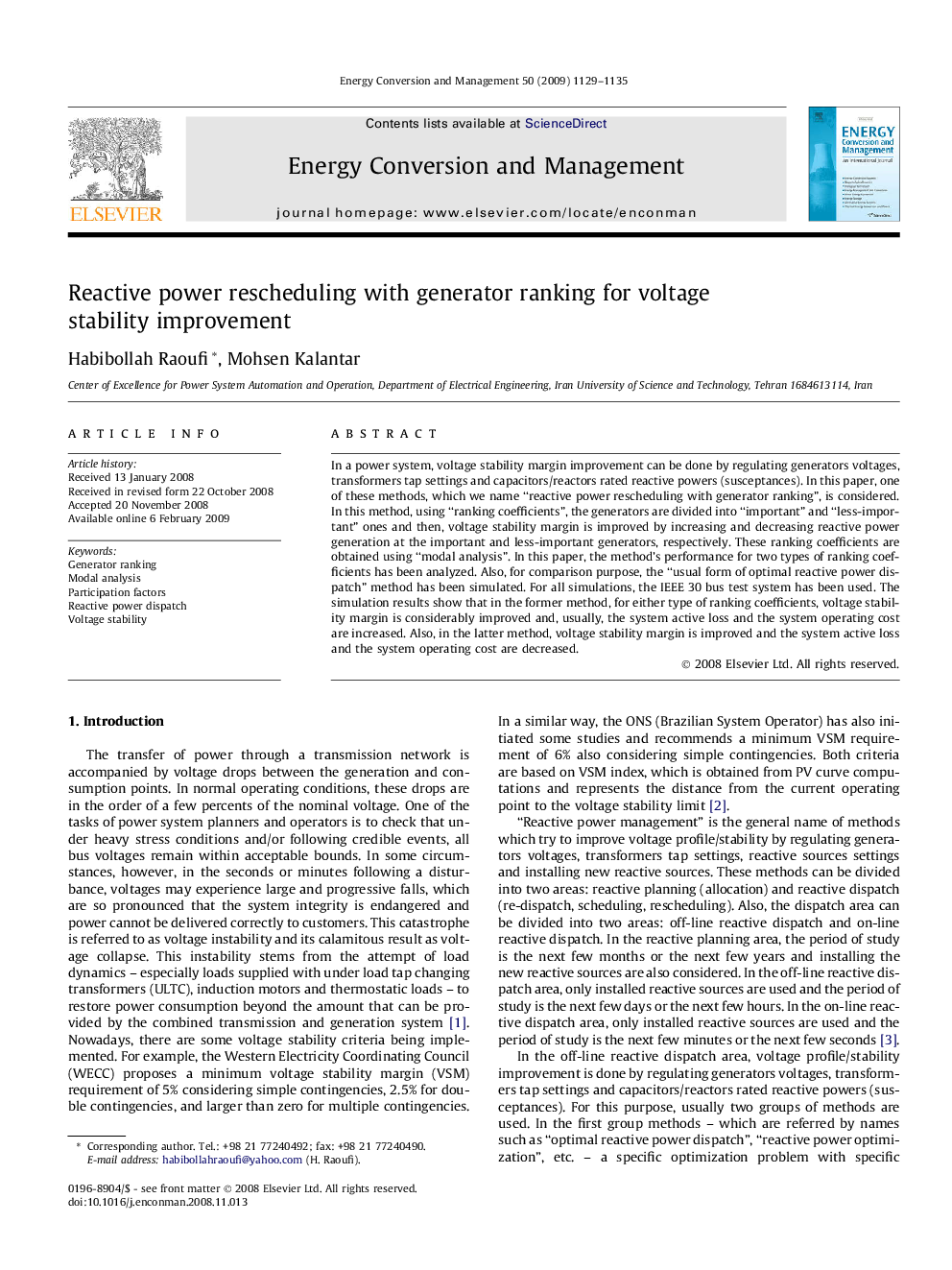| Article ID | Journal | Published Year | Pages | File Type |
|---|---|---|---|---|
| 766285 | Energy Conversion and Management | 2009 | 7 Pages |
In a power system, voltage stability margin improvement can be done by regulating generators voltages, transformers tap settings and capacitors/reactors rated reactive powers (susceptances). In this paper, one of these methods, which we name “reactive power rescheduling with generator ranking”, is considered. In this method, using “ranking coefficients”, the generators are divided into “important” and “less-important” ones and then, voltage stability margin is improved by increasing and decreasing reactive power generation at the important and less-important generators, respectively. These ranking coefficients are obtained using “modal analysis”. In this paper, the method’s performance for two types of ranking coefficients has been analyzed. Also, for comparison purpose, the “usual form of optimal reactive power dispatch” method has been simulated. For all simulations, the IEEE 30 bus test system has been used. The simulation results show that in the former method, for either type of ranking coefficients, voltage stability margin is considerably improved and, usually, the system active loss and the system operating cost are increased. Also, in the latter method, voltage stability margin is improved and the system active loss and the system operating cost are decreased.
